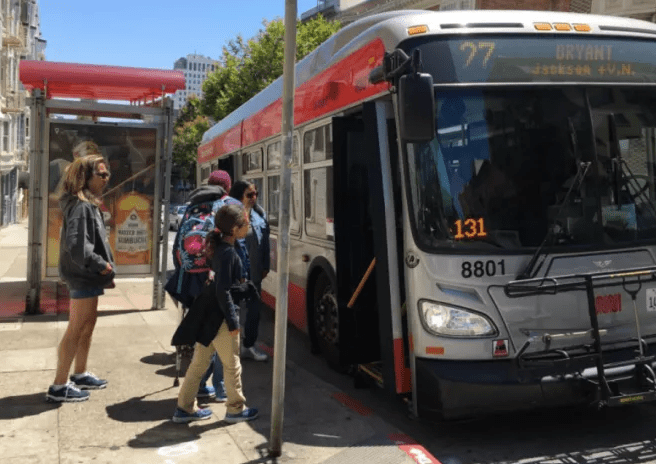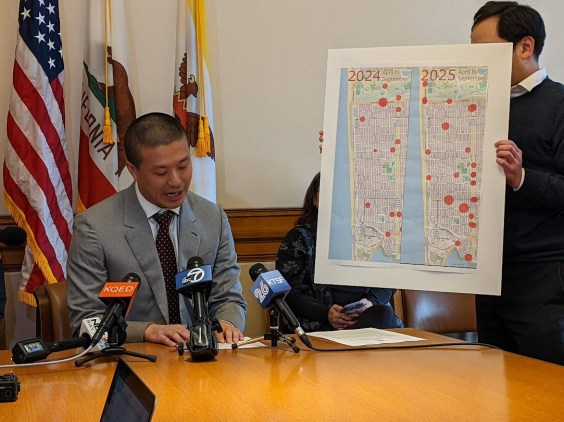Is your bus route maddeningly slow? On many routes, the problems is that there are just too many stops.
But transit agencies have a ready way to address this: it's called bus stop balancing.
Buses spend about 20 percent of their time at stops. Transit agencies such as SFMTA in San Francisco and RIPTA in Rhode Island have used bus stop balancing — removing selected bus stops — to speed bus journeys by as much as 14 percent, according to a new report [PDF] from TransitCenter.
This method is inexpensive and could improve practically any fixed bus route. But it needs to be undertaken carefully, because it can be alarming for riders to have their regular bus stop moved, especially without proper warning and a clear explanation of the benefits.
For agencies that want to take this on — and more should — here's what TransitCenter recommends:
#1. Have a strong public outreach plan
Eliminating a bus stop without doing a lot of leg work to inform riders can backfire tremendously. Riders revolted when the Rhode Island Public Transit Authority attempted to pare down the number of bus stops without enough advance notice.
The advance notice should be in the form of information placed at bus stops, and there should be ample surveys and focus groups. Outreach staff must be multi-lingual.
RIPTA was eventually able to proceed with bus stop balancing after "resetting" and doing a better job with initial outreach. The agency ultimately eliminated 34 percent of stops across its network.
#2. Be clear about the criteria for removal
That will make the public more accepting of the changes. TransitCenter recommends keeping bus stops:
- That have high ridership
- That are located at key transfer points
- That are near senior centers and other places that serve older people
- That have good pedestrian access (sidewalks, crosswalks)
- That are wheelchair accessible
- That have amenities like shelters and benches.
"Low ridership stops that are not accessible and lack amenities should be prime candidates for removal," the organization said.
And there should be a public process to check the agency's choices against riders' opinions.
#3. Be ambitious about removal
Agencies should set targets for the number of stops they want to remove understanding that many initial selected for replacement will need to be reinstated due to public pressure.
#4. Involve bus drivers
Agencies must conduct an inventory of stops to determine which ones will be eliminated — and bus drivers know which stops are well used, especially for people with disabilities. Let the drivers help inform the decision.
When Dallas's DART began the process to remove 16 percent of its stops on three routes, the agency had a workshop with 15 bus drivers.
#5. Commit to more amenities at remaining bus stops
Help win support for the changes by offering riders something in addition to time savings, like better facilities at the remaining stops.
"By combining bus stop balancing with investments in sidewalks, crosswalks, shelters, benches, and real-time arrival information, agencies can counter objections to the removal of some stops and give the campaign better odds of political success," TransitCenter said.






